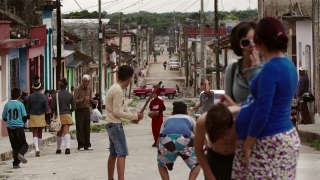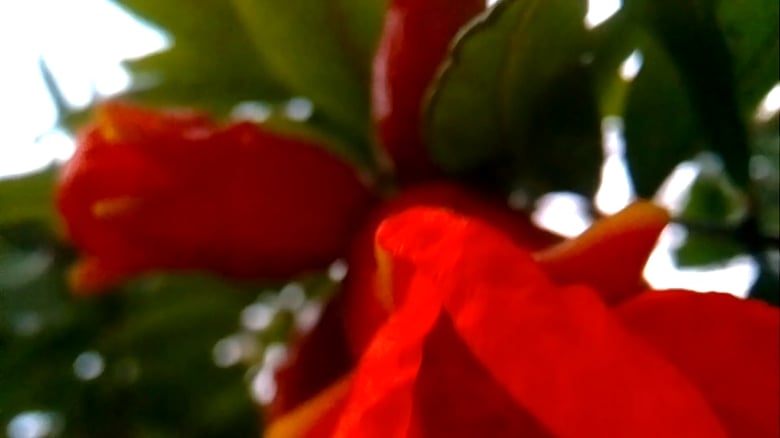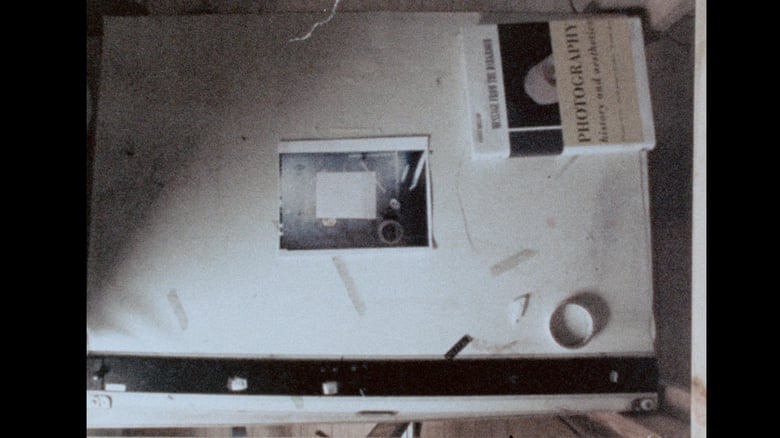Vanishing Worlds (notes on Fascinations program 4 @ Jihlava Fest)
Originally published in Festival Daily, Jihlava Film Festival, October 2017
Only there in front of the screen did life become straightforward. To find yourself with a stranger in front of the same image made you desire the stranger. The impossible was within reach, life’s problems were resolved and became imaginary. Marguerite Duras
In a 2002 interview, Kawaguchi Hajime noted: “At first my interest was in the structure of film, but before long that started to grow into an interest in taking the structure of film as the structure of reality—as a model or mock-up of reality.” (interview with Aaron Gerow, 2002) Schooled in the Kyushu Institute of Design as an experimentalist, Hajime returns to Jihlava with rack-pinion (Wired-Glass No. 4, 2017) (4:51 minutes, 2017), in which skittering strips of film float over a ground of flesh-coloured tape splices (or at least a cascade of distressed contusions). The serial images on the filmstrip are abstract, brightly coloured remnants, softly focussed, a rephotography of an original entitled Wired-Glass, which is a form of safety glass. This glass used a grid system of wires to hold the glass in place in case it’s broken. But as it turns out, the safety feature weakens the glass, causing it to break more easily, causing many countries to ban it.
The End of Time by Milcho Manchevski (5:24 minutes 2017) stretches a moment on a sunny Cuban afternoon, as boys play baseball on the street. Beside them schoolgirls walk home, while behind the scenes, a young boy turns from relief to joy in the presence of his mother. Parts of the image are frozen, while others are cleverly cut out and slowed, moving across a backdrop of waiting. Like the earliest moments of cinema, there is no single focal point, the viewer’s attention is encouraged to wander across the frame, as if our needs for heroes or test subjects was not yet necessary (the oppressions must have been lighter then). A study of the everyday, and the secret deliverance that lies waiting, while no one is looking. A celebration of interbeing, and the flux of the same afternoon coursing through each of our bodies.
S.J. Ramir’s In This Valley of Respite, My Last Breath (5 minutes 2014) continues the artists’s exploration into a doom drone darkness, the world barely lit, only intermittently visible through home-tweaked filters which create grainy, lo-fi, black-and-white impressions. Every image here arrives by itself, as if there were no connections left, no relationship possible any longer. Plants, a house, a pair of hands. How much is left of the world I continue to cling onto? This is a brooding tone poem of loss, but also: the beauty of last things, a final bouquet, a kiss of light.
Double 8 by Christiana Perschon (3:20 minutes, 2016) offers a silent view of unsplit 8mm film, a four-screen portrait of Austrian artist Linda Christanell, an Austrian avant-gardist from the 1970s. She appears securely hidden by a movie camera, and the film’s abundant, hand-processed solarization, until the picture clears and the artist can be found squinting in concentration, as she struggles with her mechanical eye prosthesis.
Agata Mergler and Cristian Villavicencio have been building “haptic cameras,” wearable strap-on cams that promise pictures that touch, up close and personal. These embodied macro views might reflect on the relationship between seeing and machines, or even how the viewer becomes part of the viewed. In Garden Exercises (Haptic/Visual Identities) (7 minutes, 2017) the cameras hover over a series of libidinous plants, strolling, fascinated, staggered.
Semiconductor (Ruth Jarman and Joe Gerhardt) have been active for nearly twenty years, looking into the cracks of science and technology. How do we know what we know? In Where Shapes Come From (9 minutes, 2016) they deliver a double-screen portrait of a science worker in the mineral sciences laboratory at the Smithsonian Museum of Natural History. Overlaying 3D animation with dryly sober documentary framings, white mineralogist Jeff Post provides a voice-over description of how the world begins, as atoms create structure and form.
Domus by Rhayne Vermette (15:20 minutes 2017) is a fractured animator’s portrait of Italian post-war architect Carlo Mollino (“”Everything is permissible as long as it is fantastic.”) The title refers to rich people’s homes in ancient Rome, though here the emphasis is on the marks of construction – I haven’t seen this much splicing tape in a movie since Stan Brakhage’s dog died – and the dreams of order and disorder those constructions are driven by. The artists offers us emptied frames, walls with lines on them, thickets of sound bouncing from speaker to speaker. And finally pictures from the artist’s own house arrive; it is a kind of submarine of light and shadow, with a lonely cat familiar crossing the well-lit axis. What a heavenly delirium, paced out one frame at a time.
The Thread (5:46 minutes 2017) by Bulgarelli Pietro and Polanco Pablo is the program’s highpoint, a dreamy black-and-white super 8 Idyll of materialist beauty. While Gabriela Fellet tells us how wool is made, the camera looks up at a hardly there sky, or else grazes across foggy pastures, the lines of her hands, the threads of wool parsed and parted. Let’s include everything. We need to include everything. Every shot is more necessary than the last. This work is also a life, this wool engages the old houses underwater, the beach shadows and most of all that old face looking into the light, each line part of a map of a vanished world.





